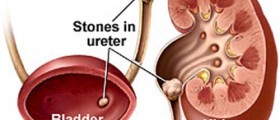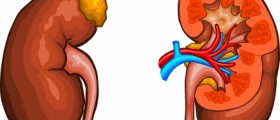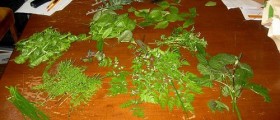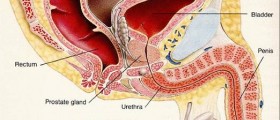A kidney stone is a hard mass resembling a pebble made of crystals separated from the urine. Human urine contains substances that prevent crystallization, but in some people, these inhibitors do not work well, and those people develop stones in their urinary tract.
If a stone is small enough, it can pass unnoticed through the urinary system.
There are several kinds of kidney stones. The most common type is made of calcium combined with either oxalate or phosphate.

Kidney stones that are the result of an infection are less common, and they are called struvite or infection stones. There are also uric acid stones and cystine stones. Cystine stones are very rare.
Kidney Stones Treatment
In most cases of kidney stones, surgery is not necessary. Usually, it is sufficient to drink plenty of water to produce large quantities of urine and help the stone get out of the urinary tract. Pain medication is sometimes required as it is not unusual for kidney stones to cause pain.
- A literature review was performed in PubMed/MEDLINE up to December 2022. The search terms used were: endourology, robotic, percutaneous nephrolithotomy (PCNL), innovations, advancements, technology, ureteroscopy (URS), urolithiasis, virtual reality (VR), three-dimensional (ED) technology and artificial intelligence (AI). The reference list of eligible studies was also screened. Eligible studies were those on the subject of technological advancements in PCNL and URS, studies on the use of robotic systems for the management of stone disease and those on the utility of AI, 3D technology and VR.
- A total of 376 abstracts were initially identified using the search terms. After assessing eligibility by abstract/title screening, a total of 274 were excluded, and 102 records were evaluated after reading the full text. We then included a total of 74 studies.
- Improved ureteroscopes and vision have also improved the management of upper tract tumors. While it also allows the treatment of high-risk patient groups such as in pediatric patients and during pregnancy, perhaps future studies should also consider the cost and quality of life aspects of stone treatment.
Kidney Stones Prevention
Kidney stones can be prevented by making simple lifestyle changes. Drinking plenty of water is the most important thing.
In the past, patients with kidney stones were advised to avoid milk and dairy products because they contain calcium, which may cause the build-up in the urinary tract. Today, doctors know that not only this is not true but the calcium from milk and dairy products can actually prevent the formation of kidney stones. However, this does not apply to supplement calcium, in the forms of tablets and similar products, and they are to be avoided.
People who have very acidic urine should avoid meat, poultry, and fish. Foods with artificially added Vitamin D are best avoided as well.
The medications prescribed to treat kidney stones aim to control the amount of acid or alkali in the urine, or diuretics.
In case of cystine stones, if drinking plenty of water does not help, a doctor can prescribe Thiola or Cuprimine, drugs that lower the amount of cystine in the urine.
Final Recomendations
As for the struvite stones, once they are removed, it is important to make sure the infection does not come back. It is important to do lab tests of urine samples regularly and to take action as soon as the bacteria is noticed.
In some cases of kidney stones, surgery may be the only solution. That is if the stone cannot be passed for a long time, and causes pain, blocks the urine flow, causes infection or kidney damage. Sometimes, surgery is necessary if the stone is caught in a place that makes it difficult to pass out.
In the past, surgery for removing kidney stones was more difficult, with a longer recovery time. Today, it can be done in an outpatient setting, and only a small number of cases require a major open surgery.

















Your thoughts on this
Loading...